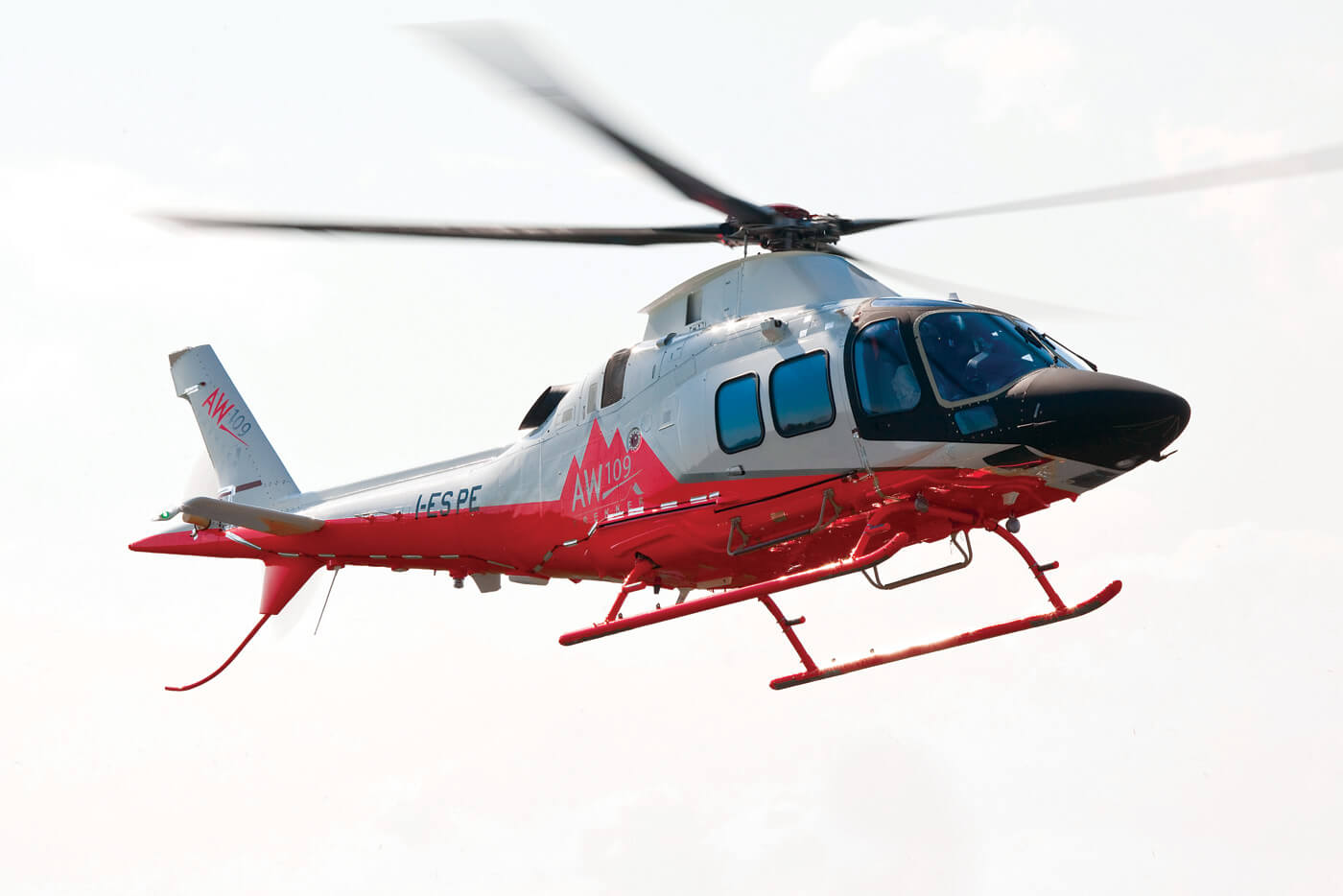A flight to hospital in an emergency medical services (EMS) helicopter can be fraught with uncertainty and fear. But really, it’s about hope. It’s about connecting people to the urgent care they need on what might be the worst day of their lives. No one wishes for a journey like that, until they need it. When they need it, the journey becomes something they may never forget.

With new aircraft featuring spacious interiors and state-of-the-art medical equipment slated for deliveries to helicopter EMS providers, Leonardo Helicopters, through its AgustaWestland product line, is committed to making sure that the sight of an EMS helicopter gives patients in need the resources to transform their hope for urgent care into the help they need.
The division has worked alongside interior firms to develop practical solutions for EMS providers across its product line, from the single engine AW119Kx, currently operated by Life Link III and Life Flight Network, to the twin engine GrandNew, in service with Swiss Air-Rescue Rega, Intermountain Life Flight, and soon to be delivered to LifeFlight of Maine. The AW139, flown by Ornge and STARS of Canada, Maryland State Police and New Jersey State Police, has also found success among EMS operators in Italy, Australia and the Middle East.
New and noteworthy
With deliveries underway of the newly-certified AW169 and two test prototypes of the AW109 Trekker now flying, these latest additions to the AgustaWestland product range keep the company well-positioned to take advantage of the growth expected–and already realized–in the global helicopter EMS market.
Longtime AgustaWestland customer Swiss Air-Rescue Rega recently committed to three AW169 helicopters for all-weather search-and-rescue and EMS as part of Project Icebird, serving patients from the Swiss lowlands to the high-altitude and rocky Alps. Rega’s AW169s will feature an innovative full icing protection system, making the type the first light category helicopter provided with this capability.
“Project Icebird confirms Rega’s strong confidence in our technology, customization capabilities and the outstanding performance of the AW169,” said Daniele Romiti, managing director of Leonardo Helicopters. “We look forward to working with them to bring their specialized AW169 into service.”
Safety in design
Having only received basic instructions on the location of a patient in need of an urgent transfer, or vague details about a search-and-rescue mission, pilots and paramedics make split-second decisions as they go. The safety components built into AgustaWestland’s EMS helicopters, including the AW169 and AW109 Trekker, proactively meet these demanding EMS mission requirements.

Across the product range, the aircraft feature all new avionic suites with increased situational awareness, redundancy of main helicopter systems and compliance with the latest safety certifications and operational standards, in addition to meeting stringent helicopter EMS regulations.
On the AW169, paramedics will notice the high rotor clearance that improves ground safety, and all passengers will benefit from knowing that the composite airframe and seats are fully crashworthy. Pilots have more accurate information at their fingertips, through dual GPS and wide area augmentation system (WAAS), improving awareness in order to guide operational decisions.
Safety comes standard, allowing all medical operators to mitigate external hazards through synthetic vision, helicopter terrain awareness and warning systems, traffic collision avoidance systems (TCAS), and flight data monitoring.
Patient care: Above and beyond
In the end, these additions to the global helicopter EMS fleet will only be as effective as the improvement of outcomes for patients in need of critical care transportation. As important as the safety features, technology, and improved avionics are the interior resources of AgustaWestland aircraft that allow paramedics and flight nurses to deliver medical care without delay.
One key feature of the AW169 ‘APU-mode’ allows medical crews to provide care while the electric, hydraulic, and air conditioner systems are running and rotors stopped, thus allowing the medical crew to stabilize the patient while having access to all medical equipment that requires power. No feature is more critical to patient stabilization prior to transfer.
With regards to Swiss Air-Rescue Rega, the interior will be developed in close collaboration with the company and will allow for flexible configurations depending upon the operating profile.
“With the new [AW169] rescue helicopter, we will be able to extend our scope of operations and in the future come to the aid of more people in distress than ever before,” said Rega CEO, Ernst Kohler.
Already certified in the AW119Kx and AW109 series and available in the AW109 Trekker is an interior solution developed by Spectrum Aeromed that features a left side load pivot system, along with a base system of drawers, oxygen, and a cargo-based electrical system.
SevenBar Aviation has taken delivery of an AW119Kx featuring the left side load pivot system interior.
“The Spectrum interior, combined with the ease of access to patients in the AW119 and AW109 series of aircraft, will allow SevenBar to efficiently transport patients in need of urgent care and ensure our team of flight nurses and paramedics has the resources at their fingertips to deliver care in-flight,” said Wade Black, chairman and CEO, SevenBar Aviation.
As operators integrate AgustaWestland’s EMS-equipped aircraft, including the AW169 and AW109 Trekker, into their fleets, the confidence in capabilities will shift to the patients, paramedics, and pilots on board.
If you would like to see your company featured in Insight, contact sales director Frank Sargeant at frank@mhmpub.com.









